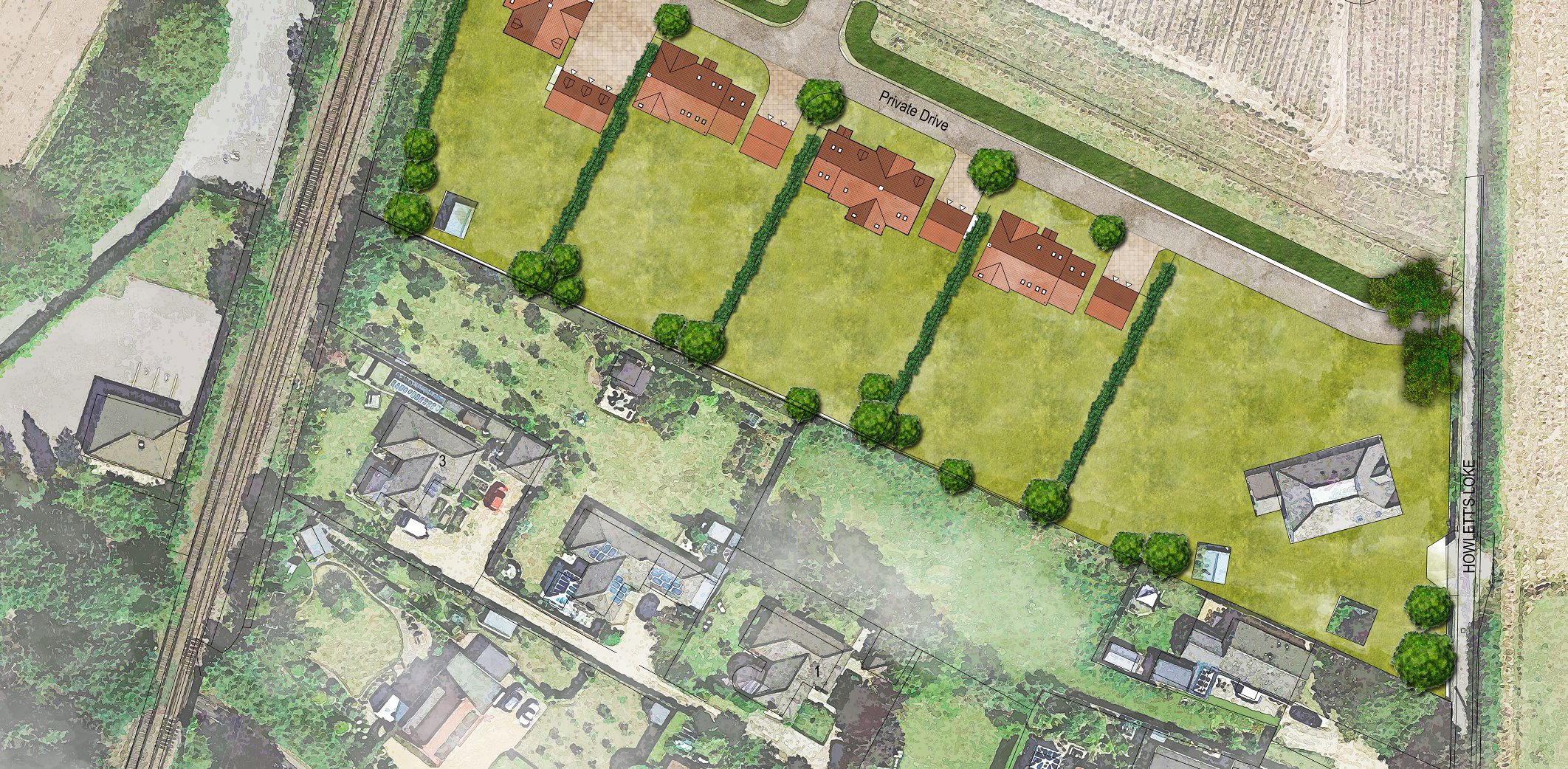Feast your eyes on the world's most outstanding architectural photographs, videos, visualizations, drawing and models: Introducing the winners of Architizer's inaugural Vision Awards. Sign up to receive future program updates >
Climate change constitutes an existential threat to humanity’s future. For architects, creating energy-efficient buildings with a reduced carbon footprint is a challenge at the forefront of the field. In light of the growing understanding of architecture’s environmental toll, the following photos from Architizer’s One Photo Challenge competition thematize the complex relationship between architecture and nature.
The division of nature and architectural photography reflects an understanding of architecture as an intervention in the natural environment (as opposed acting as an extension of it). By cultivating an ecological awareness and examining the at times fraught relationship between the natural and built environment, the following 2020 One Photo Challenge finalists challenge the implicit assumption that it is possible to entirely separate buildings from their surrounding environments.

“INTO-UNDER” by Vince Stroop. Finalist, 2020 One Photo Competition, Category: Sony.
As architectural photography is increasingly recognized as a medium in its own right, and not solely as a documentation method, there is heightened appreciation for its role in mediating how architecture is understood and promoted. Especially at a time of decreased travel, buildings may be experienced only through photography. Just as architects can self-consciously promote a purported closeness to or distance from the environment — through materials, light, and form — so too can architectural photographers frame the environmental profile of a building.

“Talk to Nature” by Ning Wang. Finalist, 2020 One Photo Competition, Category: Iphone.

“Silhouette of Manhattan” by Huanhai Cheng. Finalist, 2020 One Photo Competition, Category: Canon.
Although the conversation’s content may have changed, using film to address broader concerns on the built environment is not new. The 1927 film Metropolis depicted and thematized the extreme disconnect between cities and nature that developed after the industrial revolution. Exploring a similar theme, Ning Wang’s photo “Talk to Nature” of Ryue Nishizawa and artist Rei Naito’s Teshima Art Museum focuses on the museum’s oculus as a portal to the natural world. It emphasizes the small glimpse of green, otherwise drowned out by a sea of concrete. According to the photographer’s view, architecture is “a piece of space that humans steal from nature.”
Conversely, by capturing Manhattan’s silhouette against an ivy background at the Metropolitan Museum of Art, Huanhai Cheng measures architecture against the natural environment. Cheng creates a “fantasy” version of Manhattan washed in a verdant tide, removing the city from its steel and glass casing and setting it in a new light.
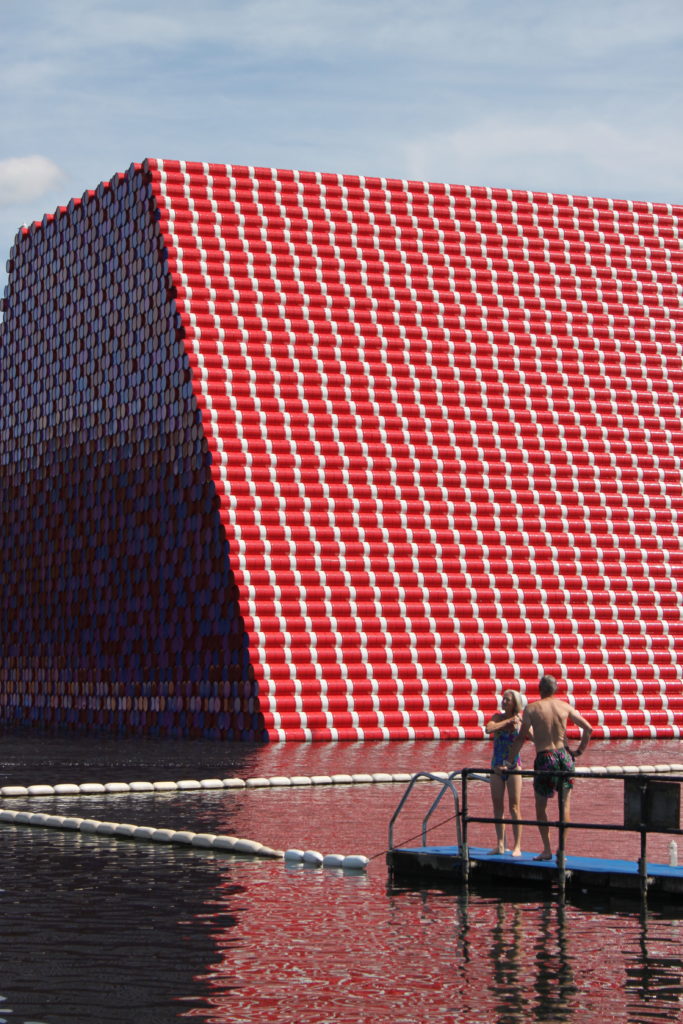
“Leave love and follow Mars” by Andrea De Santis. Finalist, 2020 One Photo Competition, Category: Canon.
Photography has historically been a powerful force for the environmental movement. Photographs of earth from space in the late 1960s and 70s, notably Earthrise and The Blue Marble, underscored the planet’s irreplaceability and provided powerful imagery to activists campaigning for new regulations and protections. Many of these images were used to promote the creation and celebration of Earth Day.
A pivotal moment in American environmentalism was the burning of the Cuyahoga River in Cleveland due to its extreme pollution in 1969. In response, Christo and Jean-Claude’s The London Mastaba used over 7,500 oil barrels on the Serpentine Lake to evoke the five-story fire on the Cuyahoga — a similarly unnatural force suspended on the water. Andrea De Santis’ photograph “Leave love and follow Mars” shows a couple pondering the otherworldly installation after a swim. With the two figures for scale, the installation also points back to the foreboding images in Metropolis, embodying the precarious future of our energy-hungry cities.
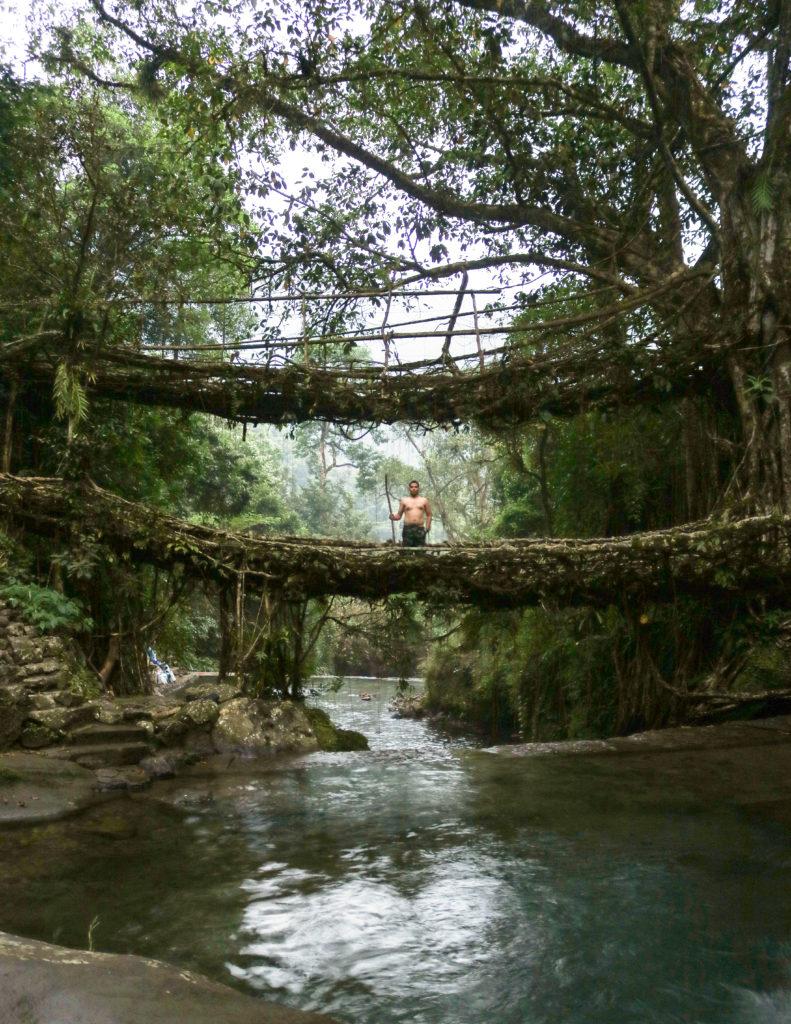
“Jing Kieng Jri – A Bridge That Breathes” by Arnav Bhatnagar. Finalist, 2020 One Photo Competition, Category: Canon.
Meanwhile, Arnav Bhatnagar’s photo “Jing Kieng Jri – A Bridge That Breathes” offers a symbiotic vision of an organic architecture formed from nature. The image calls attention to the architectural and engineering practices of the Khasi people in the northeast of India who construct living bridges of carefully intertwined ficus tree roots. Usually spanning streams or gullies, the bridges can cover several hundred feet and boast an impressive strength. Living root bridges question the assumption that architecture exists in opposition to the natural environment, highlighting ways of knowing that prioritize substantiality and ecological sensitivity.
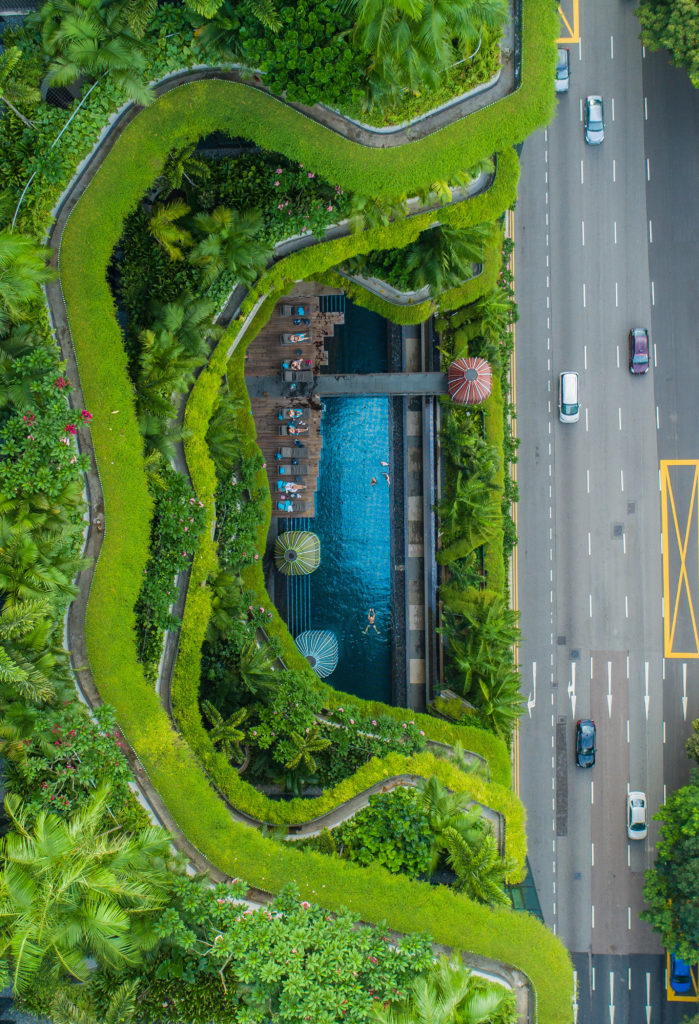
“My Green City” by Melissa Teo. Finalist, 2020 One Photo Competition, Category: Other.
In addition to looking toward ecologically sensitive construction practices, another trend in contemporary architecture is to integrate large-scale landscaping into urban development. Melissa Teo’s “My Green City” is a bird’s eye view that contrasts the terraced greenery of the Parkroyal Hotel in Singapore with its surrounding multi-lane traffic below. While at first glance, this appears as the classic division between architecture and nature, it also raises concerns over the cost of maintaining lush, high-maintenance landscapes in urban areas.
Architectural photography is key to our perception and appreciation of buildings. As architects aim to brand themselves and their practices as environmentally friendly, photography will indubitably play a central role in convincing audiences of purported environmental qualities. Yet, architectural photography can and should cultivate a critical understanding by recognizing the hypocrisy and value of branding buildings as environmentally friendly.
Feast your eyes on the world's most outstanding architectural photographs, videos, visualizations, drawing and models: Introducing the winners of Architizer's inaugural Vision Awards. Sign up to receive future program updates >
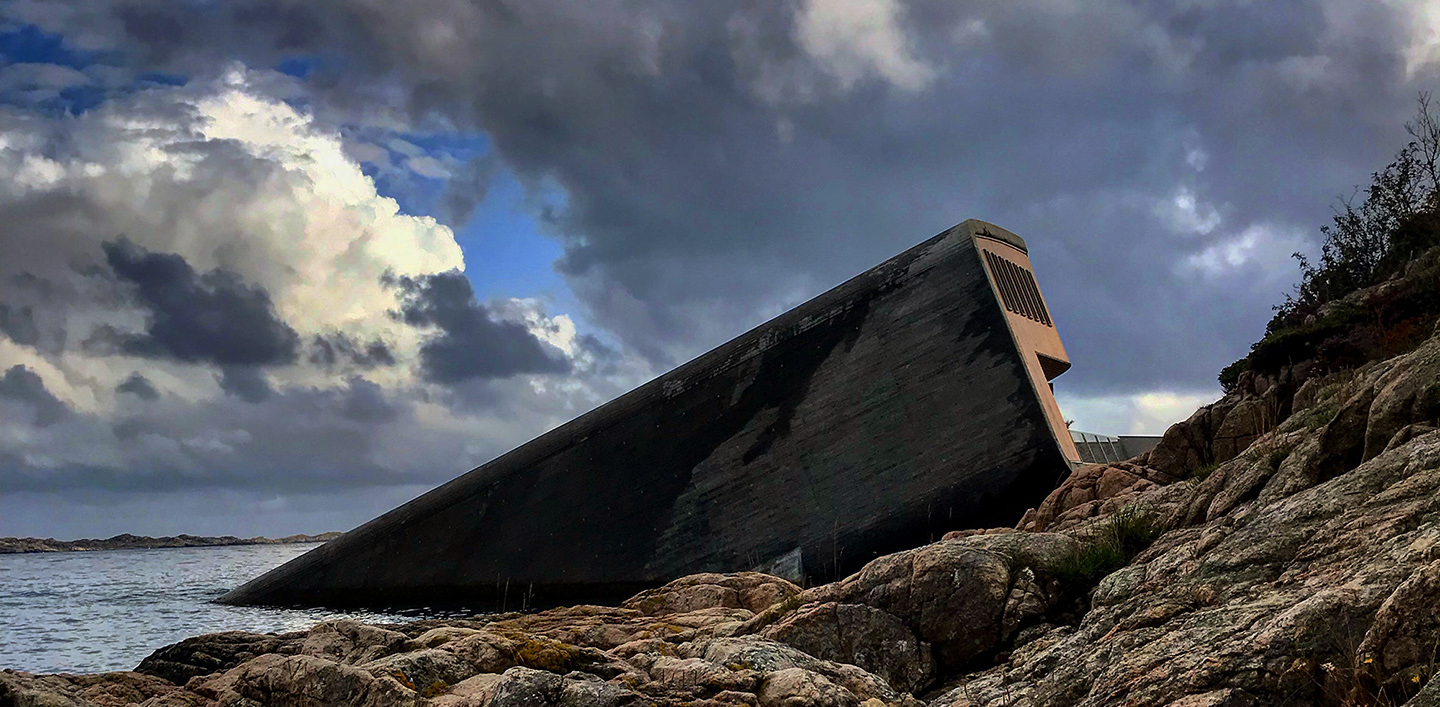





 Teshima Art Museum
Teshima Art Museum 